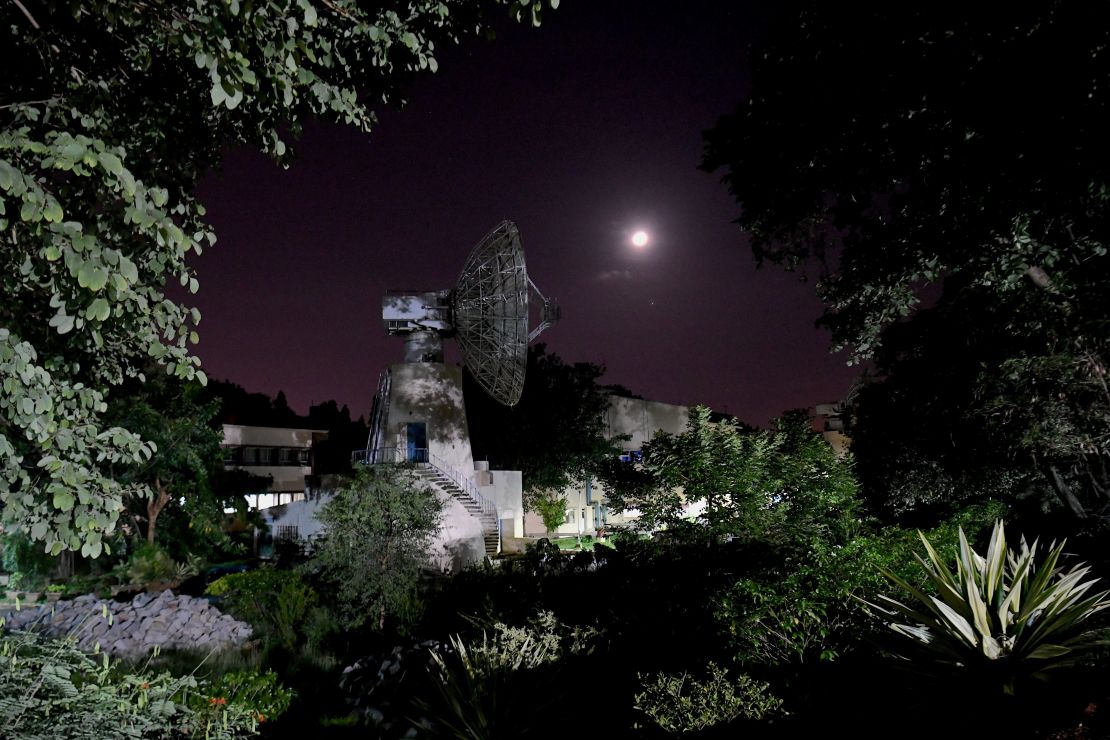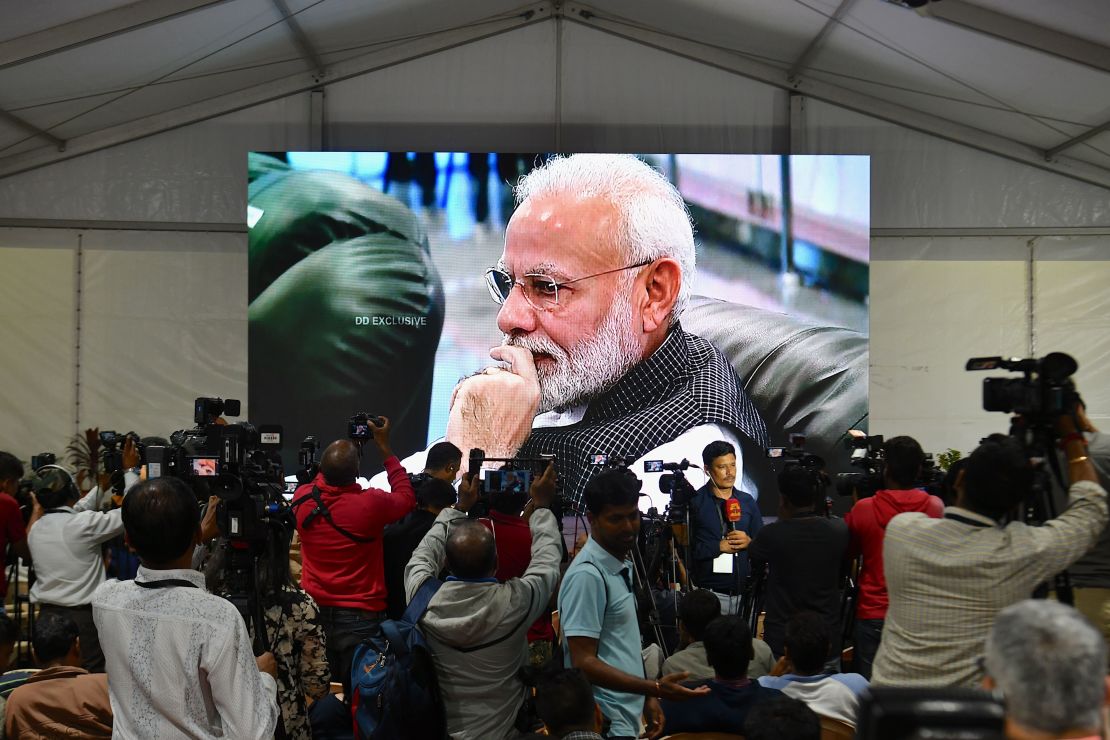India has located the lander from its Chandrayaan-2 mission to soft land a rover on the moon but has not yet been able to establish communication, India’s space agency said.
The historic mission appeared to end in failure on Saturday after scientists lost contact with the Vikram lander moments before touching down on the lunar surface.
Indian Space and Research Organisation (ISRO) spokesperson Vivek Singh said that cameras from the Chandrayaan-2 orbiter had taken a thermal image of the lander and efforts were underway to establish a signal.
The level of damage to the lander is unclear.
Its descent went as planned until it reached an altitude of around 2 kilometers above the moon’s surface. “Subsequently the communication from the lander to ground station was lost. The data is being analyzed,” said K. Sivan, chairman of ISRO. A soft landing seeks to minimize damage to the lander and its contents by controlling the speed of its descent.

ISRO said the mission was “highly complex” and “represented a significant technological leap” compared with other missions.
The next phase would have been for the robotic rover, named Pragyan (meaning “wisdom”), to deploy and collect mineral and chemical samples from the lunar surface to find evidence of water molecules on the moon.
But all is not lost, the space agency said. Even if communications with the rover cannot be recovered, the orbiter is expected to continue its mission of mapping the lunar surface and studying the outer atmosphere of the moon.
“(The orbiter) shall enrich our understanding of the moon’s evolution and mapping of the minerals and water molecules in the Polar Regions, using its eight state-of-the-art scientific instruments,” the ISRO said in a statement on its website.
The space agency said that the lander had “functioned excellently” and that “90 to 95% of the mission objectives have been accomplished and will continue (to) contribute to lunar science, notwithstanding the loss of communication with the lander,” ISRO said.

Prime Minister Narendra Modi was in the mission control room when the lander was supposed to touch down.
“In life, there are ups and downs. The country is proud of you. And all your hard work has taught us something … Hope for the best … You have served the country well and served science and humanity well,” Modi said after the announcement.
The Chandrayaan-2, which means “moon vehicle” in Sanskrit, took off from the Satish Dhawan Space Centre at Sriharikota in southern Andhra Pradesh on July 22. Weighing 3.8 tons and carrying 13 payloads, it had three elements: lunar orbiter, lander and rover.
A successful landing would have brought India into the elite group of nations who have successfully accomplished a soft landing on the moon, after the United States, the former Soviet Union and China.
Swati Gupta and Manveena Suri contributed from New Delhi.








